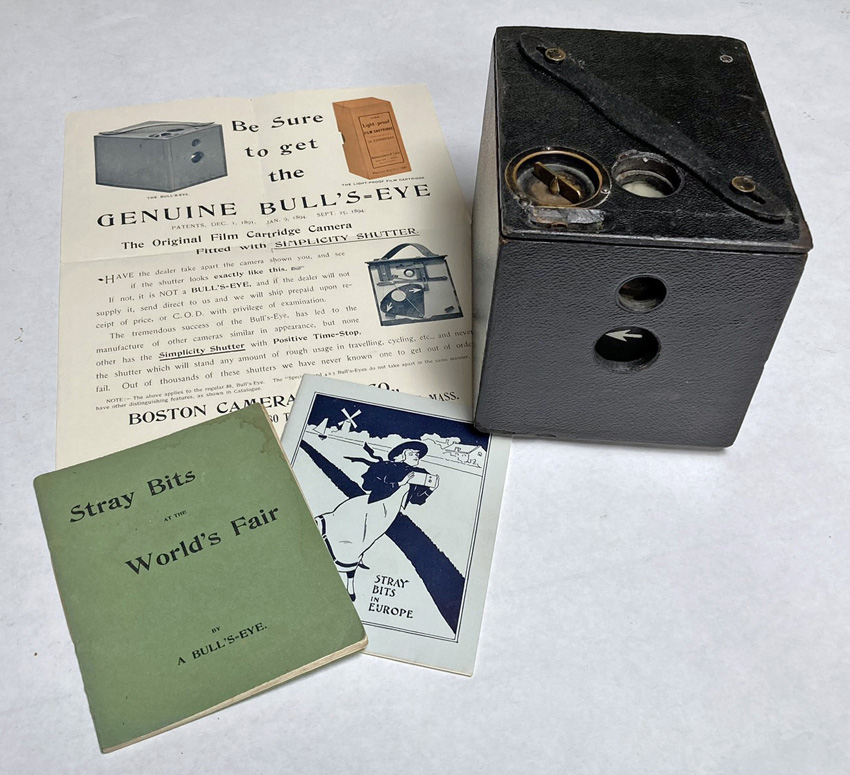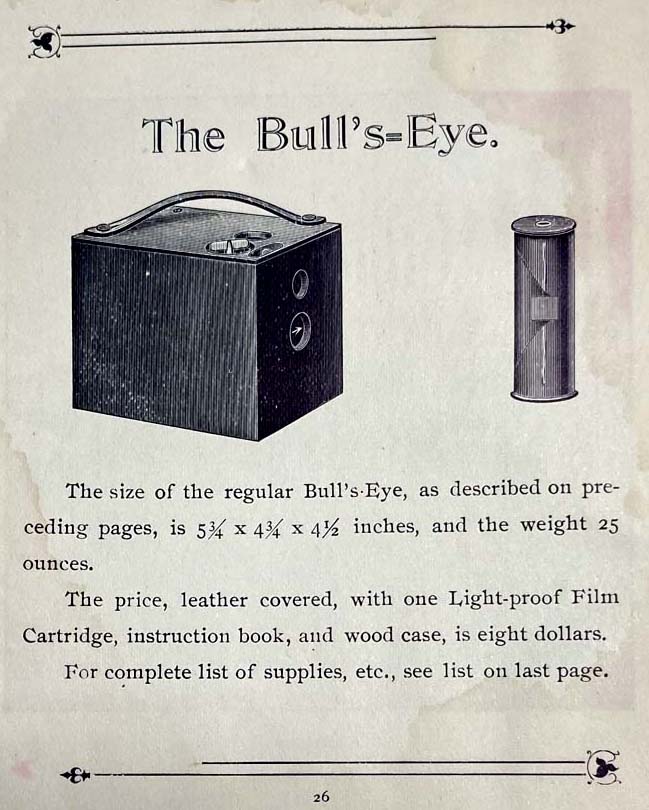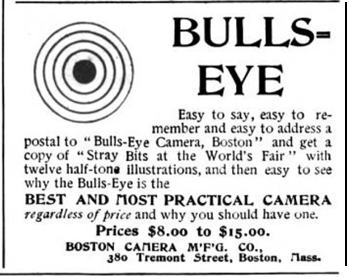


This is a very historically important camera because of three key design details invented by Samuel Turner:
- It was the first film camera to mount the spools in front of the film plane rather than behind, which makes the camera a third shorter than previous film cameras.
- It was the first to use “daylight” film rolls in which the film is backed by paper to protect it from light, and also to carry printed markings to show when the film was advanced to the correct position to take a new photo.
- It was the first to have a red window on the back to allow reading the exposure number printed on the paper backing.
George Eastman, founder of Kodak, recognized the value of those features. In February 1895 he made a near-exact copy of the Boston Bull's-Eye, which he dubbed the "Bullet". As some people have said, the Bullet was aimed at the Bull's-Eye. After being confronted by Boston Mfg. Co.'s lawyers over his blatant patent infringement, Eastman negotiated to license the patents for his cameras. But by August 1895 he realized that he would be financially better off to simply buy out the Boston Camera Mfg. Co. and take ownership of the patents and copyrights rather than paying royalties. Starting in late 1895 Kodak released their own camera under the Bull's-Eye name, as an 1896 model. (Kodak also continued to use the Bullet name on a series of cameras that could use both roll film and glass plates.)
Three versions of the original Boston Bulls-Eye were made: ebonite (an early thermoplastic), priced at $7; natural wood, also priced at $7; or leather-covered wood, priced at $8. This is the latter version. They were not big sellers and all are very hard to find today.

It used a 'to-and-fro' shutter assembly that was simpler than Kodak's earlier sector shutter, but not as well-designed as the Kodak rotary shutters which went into use by late 1895. The front of the shutter plate is marked with an arrow to indicate which direction to push the shutter lever.

The early Boston Bulls-Eye cameras had a D-shaped opening on the back for the red exposure window. This was later changed to round. The D shape was deliberate. The paper backing used by Boston Camera had a line printed below each exposure number. This could be lined up with the flat side of the window to ensure proper positioning of the film (the camera was expected to be turned sideways for convenience in turning the winding key.)


